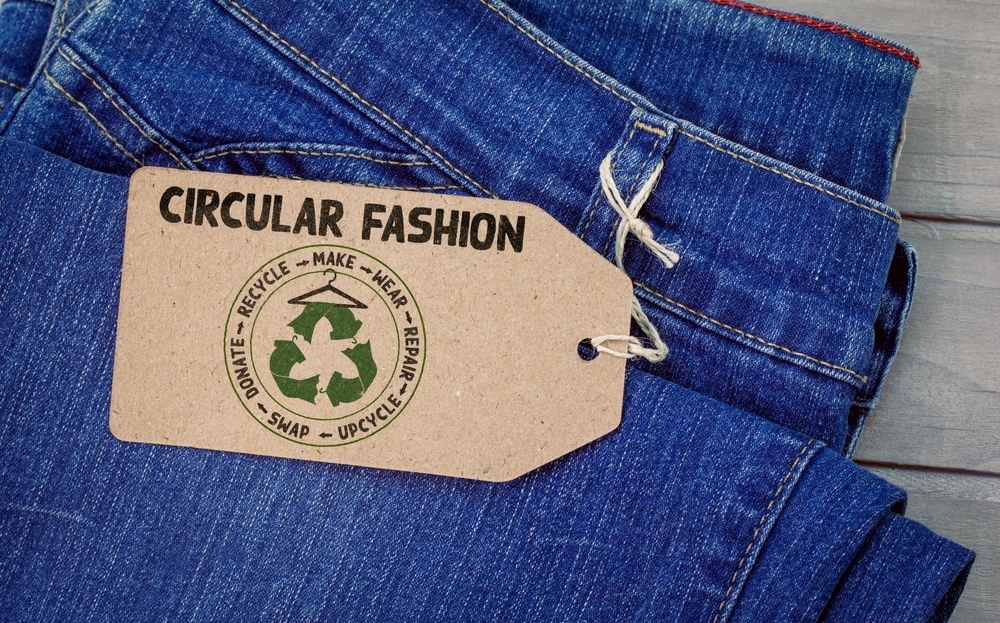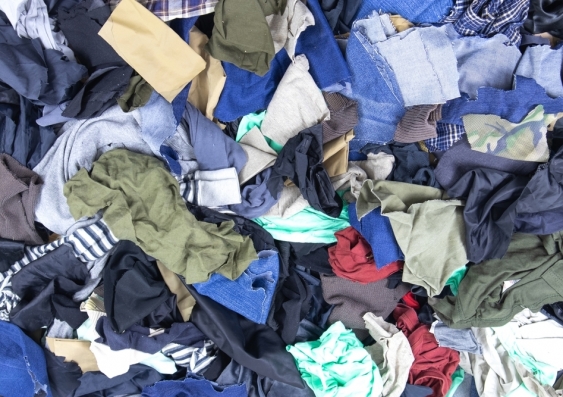In 2022, luxury fashion brand Balenciaga sparked outrage when it released a distressed version of its Paris High Top Sneakers. The limited-edition line featured rips, scuffs and an overall ÔÇÿdirtyÔÇÖ appearance. The sneakers were called out online as ÔÇ£poverty-chicÔÇØ and ÔÇ£beat-up ConverseÔÇØ; they retailed for $1850.
The controversy is perhaps unsurprising given the sneakers exemplify long-term conflicts within the fashion industry, says Associate Professor Alison Gwilt from ╣·▓·¥½ãÀ Arts, Design & Architecture. ÔÇ£TheyÔÇÖre far from the first instance of distressed aesthetics in fashion ÔÇô think everything from ripped jeans to the deconstructed designs of fashion mavericks Rei Kawakubo and Yohji Yamamoto,ÔÇØ she says.
ÔÇ£But they illustrate the social exclusion of high fashion, the industryÔÇÖs wasteful relationship with resources and impacts on the environment, and ironically its promotion ÔÇô and the arbitrary nature ÔÇô of the ÔÇÿnewÔÇÖ that drives over-consumption.ÔÇØ
Accepting that clothes can be damaged yet still ÔÇ£desirableÔÇØ has positive environmental and social benefits, the fashion and textile designer and researcher says. ÔÇ£Celebrating the natural ageing process of clothes could encourage us to keep our clothes for longer. This would also help alleviate stigma associated with worn clothing, extending its lifespan,ÔÇØ she says.
ÔÇ£However, in the case of BalenciagaÔÇÖs sneakers brand new materials are damaged before the products have even been worn, both impacting the environment and weakening the material fibres. This contradicts the fashion industryÔÇÖs investments in cleaner technologies, more sustainable practices and business models.ÔÇØ

Making simple changes to how we choose, use and maintain our clothes can assist with sustainability, A/Prof. Gwilt says. ÔÇ£Together with brands and manufacturers, we need to work towards a circular economy that eliminates waste, keeps products in use, and regenerates natural systems.ÔÇØ
Shrinking a large environmental footprint
The fashion industryÔÇÖs environmental footprint remains significant. Its long supply chain ÔÇô from agriculture and petrochemical production (fibre production) to manufacturing, logistics and retail ÔÇô equates to substantial water, material, chemical and energy use.
Australians are the second largest consumers of textiles in the world behind the US, purchasing more than double the global average; more than 90 per cent of this is thrown out within 12 months. . Clothes take decades to degrade, emitting greenhouse gases in the process.┬áWith todayÔÇÖs fashion brands producing almost twice the volume of clothes as before the year 2000, the problem is increasing exponentially.
Making simple changes to how we choose, use and maintain our clothes can assist with sustainability, A/Prof. Gwilt says. ÔÇ£Together with brands and manufacturers, we need to work towards a circular economy that eliminates waste, keeps products in use, and regenerates natural systems.ÔÇØ
Fast fashion is not solely to blame
Fast fashion┬áis often demonised for its impact on the environment: ÔÇ£These items may be viewed by the clothing user as disposable products, since they are cheaper to purchase and often made from poor-quality material. Normally fast fashion clothes are designed to be on-trend, which means that what is worn today may be considered unfashionable tomorrow. New products are constantly arriving in store to replace these outdated items.ÔÇØ
However, fast fashionÔÇÖs accessibility makes an important social contribution, she says. ÔÇ£A lack of affordability shouldnÔÇÖt mean you canÔÇÖt take part in fashion. Fashion impacts peopleÔÇÖs lives; it gives confidence and dignity,ÔÇØ she says. ÔÇ£Fashion should be enjoyed, but we need to do that in a system that benefits the environment as well as the people who work within the industry.ÔÇØ

ÔÇ£WeÔÇÖve become passive consumers," says A/Prof. Gwilt. "The appeal of new clothes often wins out over a lack of motivation, skill and time or the expense and effort of outsourcing clothes for repair. Yet most brands now provide some simple care instructions on their website, while others offer a repair program.ÔÇØ Photo: Shutterstock.
A stitch in time can keep fashion out of landfill
While lower standards of production can make preserving these items more difficult, mindful care practices can prolong a fast fashion garmentÔÇÖs life, she says. ÔÇ£All items, in fact, need preventative care and maintenance to keep them in use for as long as possible, but most people do not repair damaged clothes, beyond fixing hems or sewing on buttons,ÔÇØ she says.
ÔÇ£WeÔÇÖve become passive consumers. The appeal of new clothes often wins out over a lack of motivation, skill and time or the expense and effort of outsourcing clothes for repair. Yet most brands now provide some simple care instructions on their website, while others offer a repair program.ÔÇØ
The value of clothing is often equated to its ability to retain its original state, she says. Laundry detergents, for example, trade on their ability to keep our colours bright and refresh our whites. Yet .
ÔÇ£Ordinarily people use just two or three different functions on the washing machine,ÔÇØ she says. ÔÇ£WeÔÇÖve become accustomed to washing our clothes more or less after every use. We ignore an individual garmentÔÇÖs material laundering needs by mixing clothing together to wash them more often than necessary and typically at incorrect temperatures.ÔÇØ
Equally tumble drying and ironing can damage certain fabrics, she says. ÔÇ£But usually, we all have a particular item of clothing that we wear often and it is generally something that we carefully maintain,ÔÇØ she says.
"Maintaining clothes helps extend their lifespan. And if we maintain and use a garment for longer periods of time it can reduce the environmental impacts associated with the production and consumption of clothes.ÔÇØ
ÔÇ£If we reflect on the items worn frequently, we can learn how our clothing care patterns can deviate from established rituals to more nuanced care. . And if we maintain and use a garment for longer periods of time it can reduce the environmental impacts associated with the production and consumption of clothes.ÔÇØ
Changing our consumption patterns to better support sustainability
The circular economy is driven to promote the transition to renewable energy and materials, rather than our current model that produces and consumes finite resources. ÔÇ£The circular economy functions through two cycles: a technical cycle that keeps products and materials in circulation through reuse, repair, remanufacture or recycling, and a biological cycle that returns biodegradable materials to the earth to regenerate nature,ÔÇØ she says.
Natural fibres, such as pure cottons and linens, sit within the biological cycle, while ÔÇ£trickyÔÇØ fabrics, such as polyester and other synthetic blends that donÔÇÖt break down, fall into the technical cycle. The resale, repurposing, swapping or donating of these items is another way to prolong their use.
Some fashion brands are also making changes to support a circular economy, says A/Prof. Gwilt. ÔÇ£The Swedish-based brand, Nudie Jeans, retails here in Australia and has been offering its customers a repair and reuse service for some time.ÔÇØ
While designing specifically for the circular economy seems the obvious answer, for brands associated with low price points, the challenges are self-evident, she says. ÔÇ£Customers expect to buy items at a certain price, and this can promote the use of cheaper synthetic fabrics that donÔÇÖt biodegrade. .ÔÇØ
New bio-fibres and compostable materials hold new hope
The development of innovative new fabrics that aim to replace resource-intensive natural fibres, and petroleum-based man-made fibres will also deliver more sustainable production, says A/Prof. Gwilt.
New fibres and materials have emerged from easy-to-grow crops such as hemp, and waste by-products from crops (bio-based fibres) such as pineapple (Pi├▒atex), citrus fruits (Orange Fiber), milk (Qmilk), mushrooms (Mylo) and kelp extracted from seaweed (Algikit).
A/Prof. Gwilt is also consulting on the , the first of its kind globally. ÔÇ£Composting textiles doesnÔÇÖt require major technology breakthroughs or enormous investment or infrastructure, so it would constitute a relatively easy win for both clothing users and the environment,ÔÇØ she says.
ÔÇ£What's exciting about this is that it could give greater insight for industry to start developing products that can break down safely in compostable systems. So we might start to see a move towards designing for the biological cycle, including fast-fashion items that can be composted.ÔÇØ




